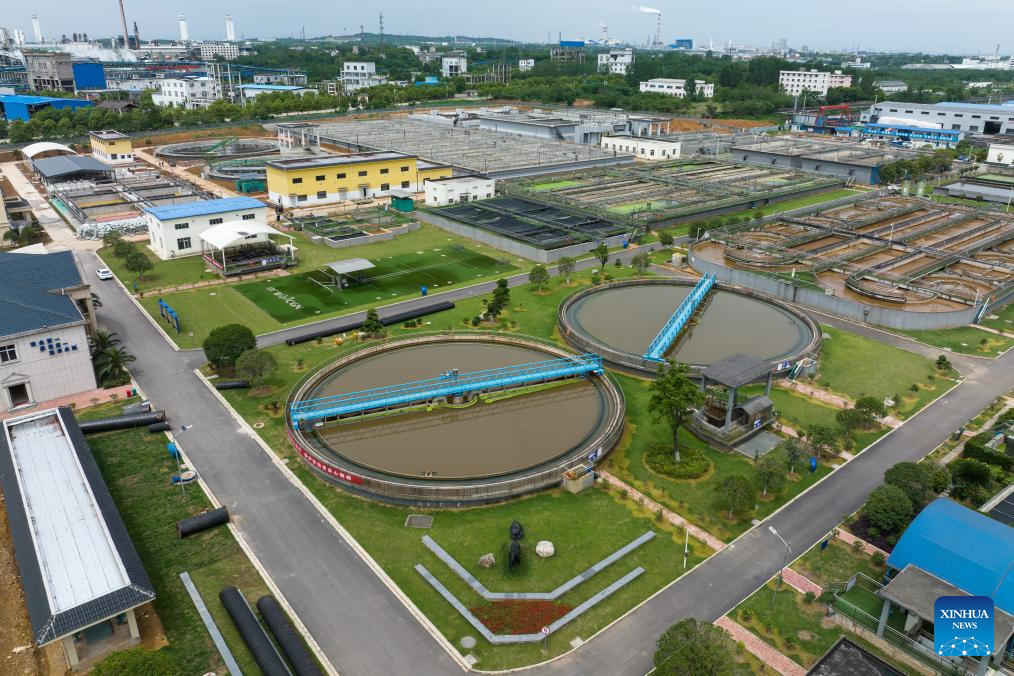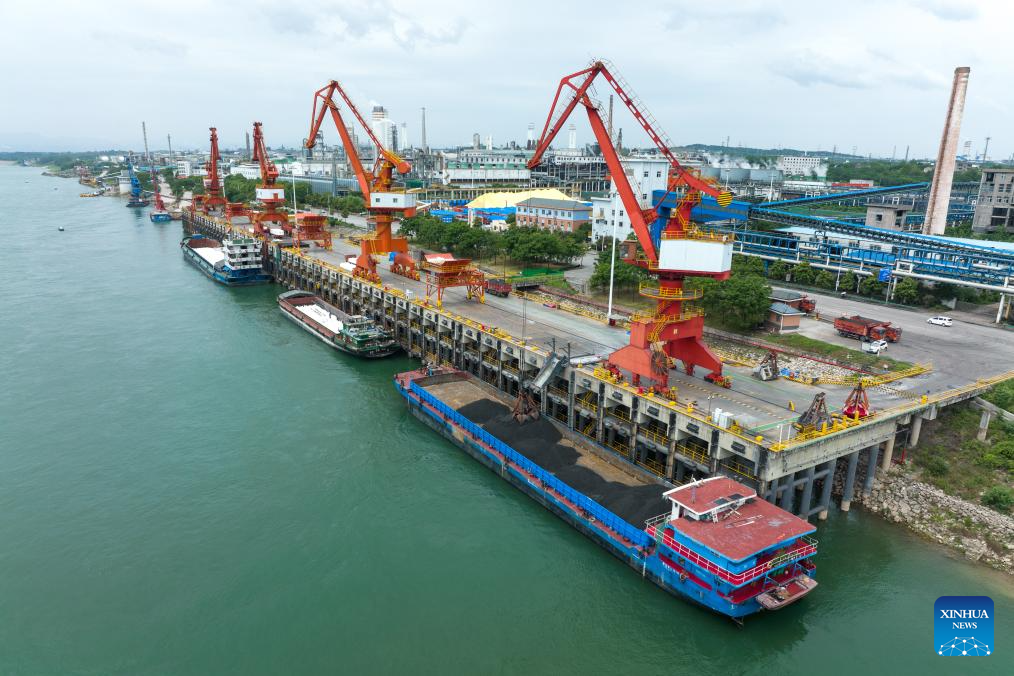
This aerial photo taken on May 22, 2023 shows a view of Yaojiagang chemical industry park in Zhijiang City, central China's Hubei Province.(Xinhua/Xiao Yijiu)
WUHAN, Aug. 9 (Xinhua) -- In a pool of circulated water in the Chengxi sewage treatment plant that links with the sewage discharge outlet, a school of koi fish is swimming.
"It indicates that the treated sewage is clean enough to sustain fish," said Liu Feng, head of the Chengxi sewage treatment plant of Zhijiang City in central China's Hubei Province. The sewage is carefully monitored because it goes into the Yangtze River, the longest river in China.
The sewage treatment plant is located in the Yaojiagang chemical industry park of Zhijiang City, a heavy-weight chemical production base by the side of the Yangtze River, home to nearly 100 chemical enterprises.
Liu bore witness to the transformation occurring in the chemical park over the past decade or so, from a time when even the mentioning of chemical industry could scare away investors and local residents.
Since 2016, overwhelming priority has been placed on the restoration of the ecological environment of the Yangtze River by localities situated along the river. Zhijiang City, joining the trend, shut down polluting enterprises and attracted environment-friendly ones.
The Yaojiagang chemical industry park of the city, as a source of sewage discharge into the Yangtze River, has upgraded its sewage treatment facilities and procedures. Today, industrial wastewater has to go through a dozen or so procedures of treatment before flowing into the river.
The most visible change happened on sewage pipes, said Liu, pointing to the criss-cross pipelines mounted overhead in the industrial park. Previously, pipelines were buried underground, where leaks were not detected in time and caused secondary pollution, Liu recalled, saying the overpass pipelines solved the problem.
Moreover, the pipelines made of stainless steel and mounted above ground are sturdier and easier to maintain, according to Liu.
The second change occurred with sewage outlets. Years ago, enterprises took advantage of the fact that sewage was discharged into the river through multiple outlets, and got rid of their filthy wastewater secretly, periling the Yangtze River ecology.
Today, all wastewater must go through the sewage treatment plant and be discharged into the Yangtze River through one outlet. The bar of water quality suitable to be discharged was also taken up a notch.
"We are committed to our duty as the 'gatekeeper' of sewage discharge into the Yangtze River," said Liu.
The Chengxi sewage treatment plant also cracked the hard nut of the disposal of sludge by cleansing the sludge and incinerating them into building materials. By turning waste into resources, the sewage plant has not only properly disposed of waste, but also defused the risks of soil being polluted by garbage landfills.
The green transformation turned the Yaojiagang chemical park into an appealing one to investors. Gone are the days when investors based their decision-making mainly on land and taxation policies. Now they are increasingly looking into environmental protection facilities, and if these facilities can support manufacturing steadily, Liu said.
Green transitioning propelled the high-quality development of Yaojiagang chemical industry park. Industrial clusters of new energy, new materials, biochemicals, and special-use chemicals, among other industries, have taken shape in the industrial park.
In 2022, the total output of the industrial park stood at 71.6 billion yuan (10 billion U.S. dollars), amounting to over 30 percent of the GDP of Zhijiang City. Ten new projects were inaugurated in the park in May this year, with an aggregate investment of over 14.2 billion yuan. ■

This aerial photo taken on May 22, 2023 shows a wharf of Yaojiagang chemical industry park in Zhijiang City, central China's Hubei Province.(Xinhua/Xiao Yijiu)



